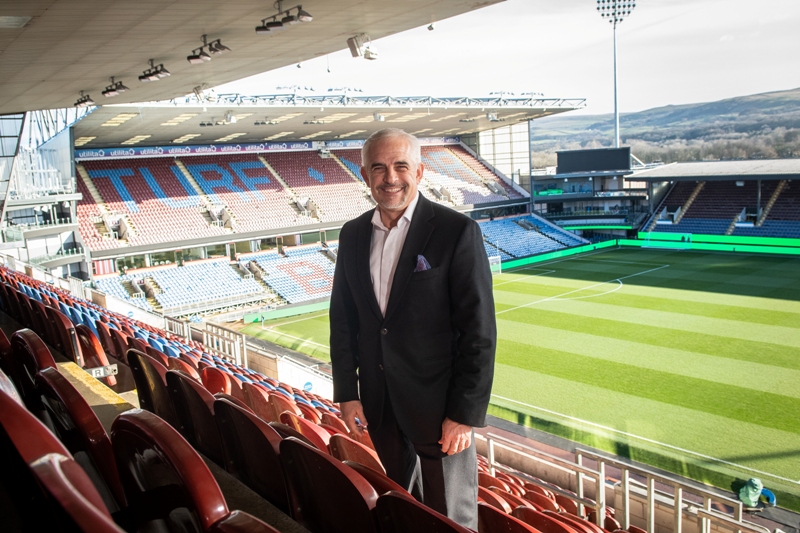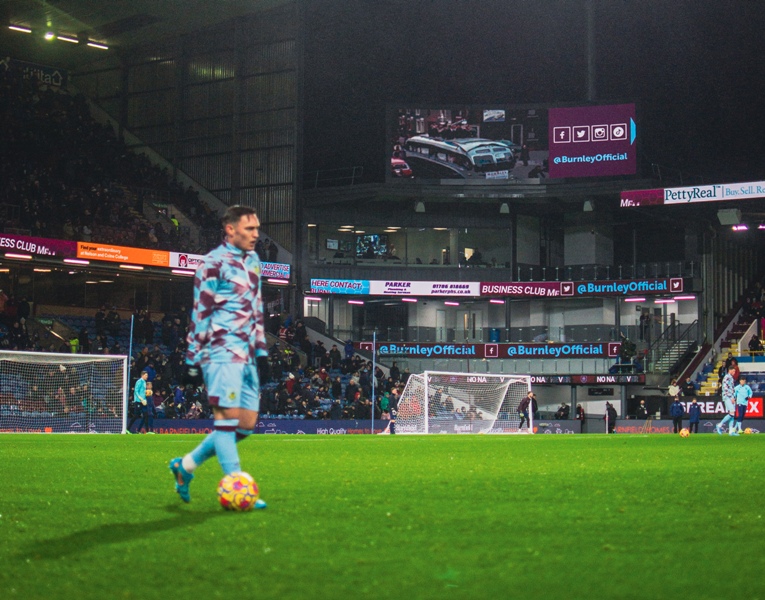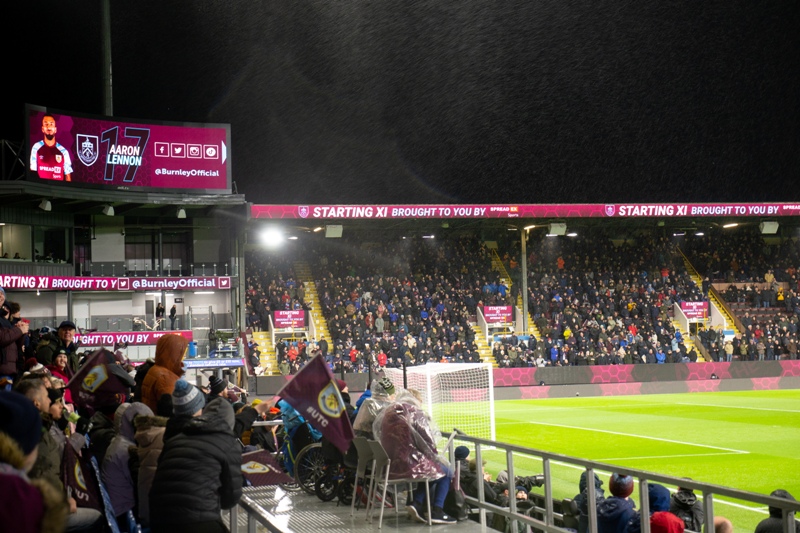Alan Pace Discusses Turf Moor’s Digital Transformation

Burnley Football Club are improving their Turf Moor home with innovative digital branding and state-of-the-art LED big screen technology. The work is being overseen by Preston-based stadium engagement specialists ADI.
fcbusiness spoke to Burnley chairman Alan Pace to discover the benefits of this major project which is making Turf Moor one of the most digitally integrated venues in the Premier League …

Alan, you have a major digital transformation ongoing at Burnley. Why did the club invest?
It’s not surprising to most people that the world continues to evolve quickly. Therefore it became more and more apparent that Burnley FC and our infrastructure needed to be able to reach fans and businesses in a different way than we previously had historically.
What has been installed and why?
We have replaced all physical signage. So there is no static signage present on the main stadium. We will continue to try to upgrade that across the entirety of all our platforms to make it much more digital in nature and LED-specific. We will use technology to change the look and feel of the stadium depending on what is taking place inside. For example if we are not using Turf Moor for a match and there is a different event, we now have ability to change all of the signage, branding and everything else to match the sponsors or the event itself.

So this digital transformation is happening both inside and outside the stadium isn’t it?
It is. But it is primarily outside. Within the stadium bowl, we are still upgrading the concourses, hospitality and other areas. There is still a lot more there that we have room to improve on.
What have been the practicalities of planning and carrying out this work during the pandemic?
Certainly the experiences during Covid for anyone who has tried to complete any kind of construction project have been difficult. We endured a lengthy process for planning, delivery and organisation which was constantly disrupted by elements that are out of our hands. Global shipping has become impossible to predict and then we have had a continually changing fixture list driven by Covid outbreaks across the league. So it has taken a long time. We started this project more than a year ago in January 2021 and we are just finishing what I would call the first wave of the things we wanted to do. We expected it to be completed last summer but delays led to all kinds of problems. What we have learned from it is that you have got to be planning six to nine months in advance. Then you can negotiate hold-ups that you can’t plan for apart from knowing that they are going to be there.
How will this project help to unlock the club’s commercial potential?
It’s very important to be able to connect with our supporters and the audiences that use our stadium for their respective events. So we are now able to brand Turf Moor in the way that may be required for a particular non-football event as well as the way that we want it branded for a matchday. There is a flexibility to change on a moment’s notice and adapt to the commercial opportunities that exist. For example, if a car company wanted to promote a special deal and highlight that around the entirety of Turf Moor then we can actually change the LED everywhere. We can also do this on the way out of the stadium so that people walking back to their cars from the different stands all see the same thing at the exact same time. Therefore we believe it has benefits to commercial partners in helping us unlock those opportunities with them. But it also has benefits for our fanbase by making sure that they don’t just see the same thing that had been displayed previously on a static basis.
How does the digital transformation help your non-matchday market that exists away from football matches?
We can now allow people to facilitate a stadium takeover for their brand or for their event. As an example, if someone was hosting a meeting or a concert then we can actually re-label and reconfigure the whole place to represent what they are trying to get across as their message. So it doesn’t have to be “Burnley Football Club” every time you walk into that stadium with only Burnley FC’s sponsors on display.
When you were planning this project you consulted with the Burnley fans to make sure they would have a significant contribution didn’t you?
Yes we spoke to a lot of supporters to get an understanding of what we were missing as a club and what would be seen as helpful. It was very clear that our communication methods were not necessarily the best previously. I continue to gather feedback by walking around the stadium on matchdays and talking to people to get their thoughts. So yes, we consulted with the fans beforehand and we are maintaining that dialogue now.

What is the verdict of the Burnley fans then? The transformation has been designed to help the supporters’ experience hasn’t it?
It has. The signage gives directions and information. We also have images of first team players that we can use regularly during the season. I think the feedback is very positive from the fans I have spoken to. They like to see their club embracing the technology that is available. We are speaking to some of the supporter groups about adapting the way we upload the exterior historical signage for club legends etc. We can do things more ad hoc and promote stories like our women’s team winning matches and so on. These are opportunities for us to be super-flexible and to be able to reach out to all our fans.
Football is a global event these days so does the digital experience help those watching Burnley matches on television at home and abroad?
It is hard to say that it does. I would say yes for the sponsors on the LED that is wrapped around the pitch because it is bigger and higher definition. I would hope that shows up really well on TV. In some of the areas, it is double-banded so that gives a better display for broadcasting. We also have a technology that is incorporated into it that is not even permitted in the Premier League at the moment – but it is allowed in other leagues – which allows for broadcasters to put up different advertising around the LED depending on the market that they are broadcasting to. So if they are trying to target a certain demographic or bring a specific response then that is achievable. Eventually therefore, this could all have a bigger influence but otherwise at the moment most of our digital transformation is not showing up on TV to be fair.

How quickly can you update the news and information on matchdays?
Technically we can do it almost live although there is a little bit of a delay of probably 30 seconds to a minute. The way that we have set up from a control perspective is pretty much real time. We can input information immediately when required.
How has this relationship with ADI developed as a result of the work?
The relationship has been fantastic and I can’t say enough about what we have learned from ADI. Firstly, they have shown us what is possible. They have also been very helpful in making sure we didn’t overdo certain aspects of the digital transformation. We were advised not to do too much of something that wouldn’t maybe benefit people in the way that we would like to. So really ADI aligned our goals with the capabilities that are out there. In addition, they were very clear about what is and what isn’t financially viable in the current environments within the league that we are in. Therefore we have come to trust the company well beyond just putting up LED.
ADI are a local business based in Lancashire. Was that an important consideration for you?
Yes. We did originally look around quite a bit. But the fact that ADI are just down the road in Preston made it really easy for us to go and visit them. I am big on working relationships and getting to know people, especially those who run their business like we run ours. I like to understand that commitment after the sale and the long-term relationship. It is not a case that we bought something from overseas and we can’t do anything about it if it goes wrong. We have all been there where we have purchased an item from the internet and then you can’t get anyone to fix it or take it back! So it is really nice that ADI are close by and we have been able to build a connection with them. We continue to have that great relationship going forward.
Finally, how proud are you that you now have world-class technology at Burnley Football Club?
Very, very proud with what we have been able to do on the LED side. We are very happy with that.
This interview appeared in April’s fcbusiness magazine (issue 140) written by Tony Incenzo. To subscribe to the magazine visit: www.balticpublications.com



